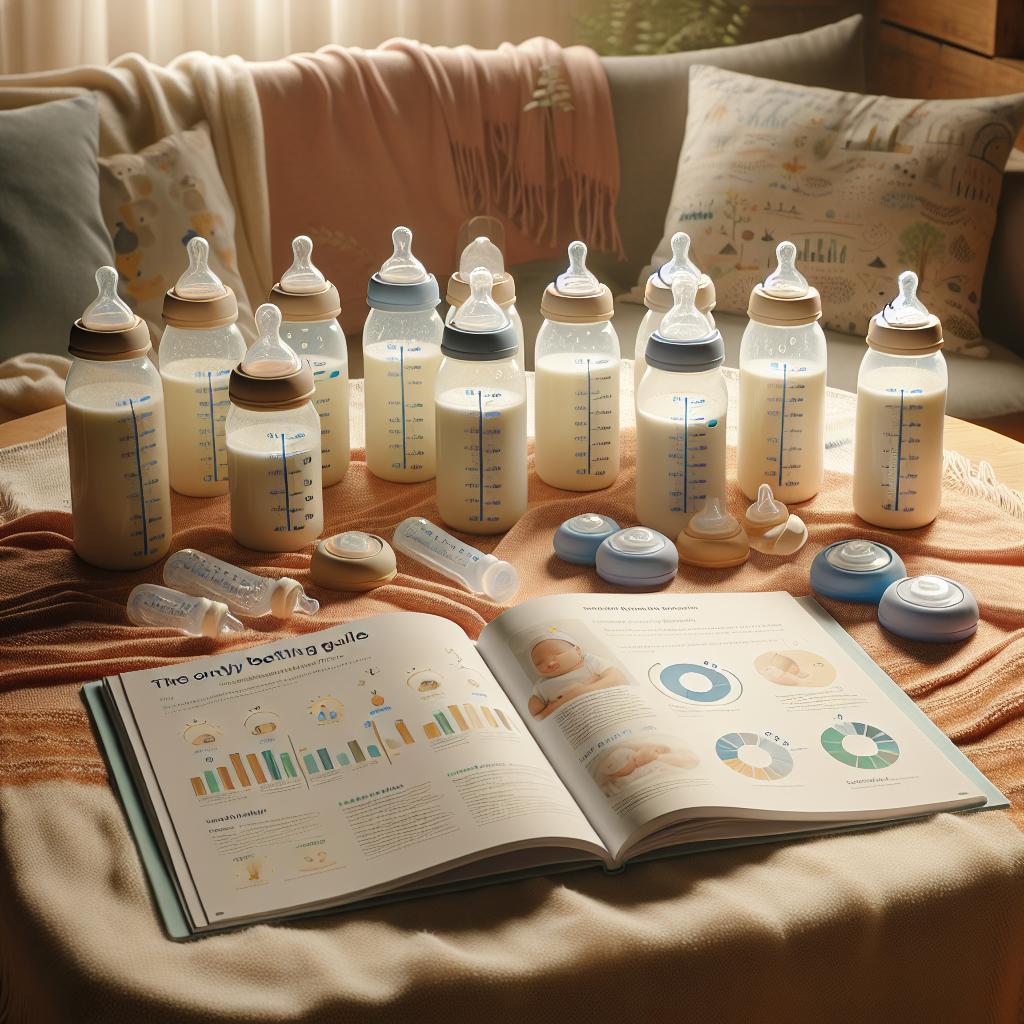The Revolutionary Bottle Feeding Techniques You Need to Know
Understanding Bottle Feeding
Before diving into the various bottle feeding techniques, it is essential to understand why it is so critical. Whether you’re a new parent, a caretaker, or even a pet owner, comprehending the proper way to bottle-feed can play a significant role in successfully nourishing the one in your care.
Successful Bottle Feeding Techniques
Do you remember the overwhelming feeling when you first attempted bottle feeding? To many, finding the right bottle feeding technique may seem like an insurmountable task. No need to worry – we’ve gathered the best feeding techniques for you. Implementing these methods will make bottle feeding a breeze.
- Hold Your Baby Right: The way you hold your baby during feeding time can significantly affect their intake. Make sure to hold the baby in a semi-upright position during feeding. This posture ensures that the milk goes straight to the stomach and avoids the risk of it going into the middle ear, causing infections.
- Understand Your Baby’s Signals: It is essential to understand when your baby is hungry or full. Their signals, like turning their head away, can indicate they are full, while crying and fussing are signs that they are hungry.
- Choose the Right Bottle: Not all baby bottles are created equal, and the right choice can make a significant difference in your feeding experience. It’s ideal to choose a bottle that closely mimics the natural breastfeeding experience. For more on this, check out our post on the bottle that finally worked for my breastfed baby.
More Must-Have Bottle Feeding Tips
To further aid your quest on the perfect feeding method, we’ve also compiled some indispensable bottle feeding tips you won’t want to miss out on. Be sure to visit our must-have bottle feeding tips page for a detailed guide.
- The Right Temperature: Always make sure the milk is at the correct temperature by testing a few drops on your wrist before feeding. Too hot can scald, and too cold might not be as enjoyable for the baby.
- Always Be Prepared: Keep everything you need within arm’s reach. This includes an extra bottle, tissues, burp cloth and a comfortable chair. This ensures you don’t have to get up once feeding has started.
- Take Your Time: It’s important not to rush feeding time. Take your time, allowing the baby to feed at their pace. This bonding time can be a delightful experience for both you and your baby.
For a more visual guide on bottle feeding techniques, check out this informative YouTube video.
The Importance of a Smooth Transition
When it comes to breastfed babies, transitioning to a bottle can pose additional challenges. It’s crucial to ensure this transition is as smooth as possible to avoid feeding issues. We have a comprehensive guide to aid in the smoothest transition from breast to bottle you might want to check.
Feeding Other Animals
In addition to humans, many people often find themselves needing to bottle-feed other animals. It’s not uncommon to come across abandoned or orphaned wildlife that need nourishment. However, the feeding methods can be different. For a comprehensive guide on feeding a baby racoon or baby mice, visit Quora and this Quora post respectively.
The Feed-Sleep Cycle
Newborns have a natural feed-sleep cycle that’s important to maintain. When a baby wakes up, it’s usually a signal that they’re hungry. After feeding, they’ll often go back to sleep. Interrupting this cycle can cause unnecessary stress for both the baby and the parent. To help your baby establish a regular feeding schedule, take note of the times they usually wake up and anticipate their needs.
- Observe Regularity: Your newborn should feed regularly, typically every two to three hours. If your baby is not feeding enough, they may be unwell or simply not hungry. Contact your pediatrician in case of any concerns.
- Pacing: Don’t force your baby to finish their bottle. Overfeeding can lead to discomfort and other health problems. Pace the feedings according to your baby’s appetite and growth needs.
The Importance of Sanitizing Baby Bottles
Sanitizing baby bottles is crucial in preventing harmful germs from wreaking havoc on your baby’s health. You must sanitize all new bottles before their first usage and regularly rinse out used bottles to remove any milk residue. Numerous medical studies back the importance of sanitizing your baby bottles properly.
- Sanitize Before Use: Always sterilize new bottles and teats before you use them for the first time.
- Regular Cleaning: Clear out any leftover milk from used bottles as soon as you can to prevent bacteria from growing.
Skin to Skin Contact During Feeding
Immediately after delivery, skin to skin contact between mother and baby has been found to enhance the bonding experience, stabilize baby’s vitals, and encourage positive breastfeeding habits. This is a practice that you can continue at home while bottle-feeding as well. The proximity and contact help calm the baby, making them more receptive to feeding.
The Joy of Bonding Over Bottle Feeding
Bottle feeding your baby isn’t just about nourishment. It’s a intimate experience that allows you to bond with your little one. Each feeding is a time to hold your baby close, gaze into their eyes, talk to them, and give them complete attention. Try to make every feed count as a precious bonding moment.
Kids Following Bottle-Feeding Stage
If you think bottle feeding was a challenge, wait till you get to the next stages. As your child grows, you will unearth new adventures such as introducing solid foods, toilet training, and teaching them to communicate. If you are interested in learning more about your child’s growing stages, check this resource out.
The Trail Runner’s Bottle Feeding Guide
Juggling the joys of parenthood and maintaining an athletic regime can be challenging for many. Having a reliable bottle feeding guide can make a massive difference. For instance, it comes particularly handy for trail running mothers who balance sport and motherhood and need to know how to manage their baby’s feeding schedule effectively. For more on this topic, and to find a community who shares a similar lifestyle, visit Trail Runner Mag.







